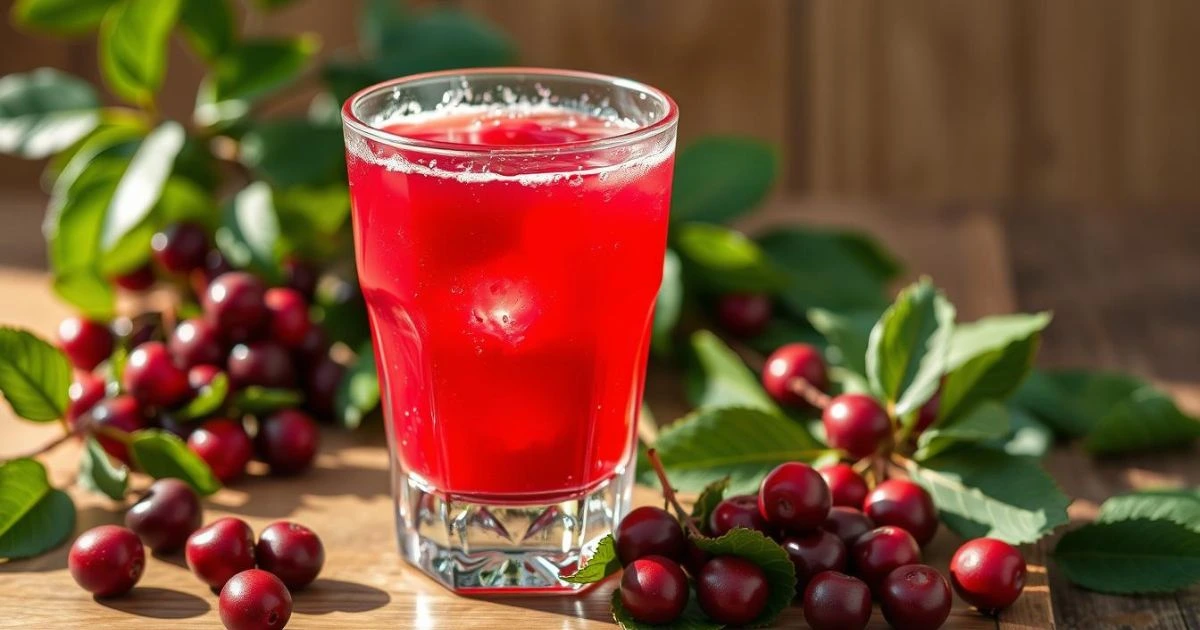Table of Contents:
Cranberry juice in spanish:
Introduction:
Have you ever sipped a glass of Cranberry juice in spanish and felt an instant wave of refreshment wash over you? This tangy, sweet drink is not just a thirst-quencher; it’s a burst of flavor packed with nutrients. In this article, we’ll take you on a delightful journey to learn how to make cranberry juice from scratch, while also exploring its cultural significance, particularly how it’s referred to in Spanish. Get your blender ready, and let’s dive in!
A Story Behind the Juice
Cranberry juice in spanish is more than just a drink; it’s a staple in many households across the globe. Did you know that cranberries were once used by Native Americans for food, dye, and medicine? These little red berries have a rich history and were even part of the first Thanksgiving feast. Today, Cranberry juice in spanish is enjoyed in a variety of ways—mixed with cocktails, poured over ice, or simply savored on its own.
In Spanish-speaking countries, Cranberry juice in spanish is often referred to as jugo de arándano. This simple phrase can open up conversations about health benefits, recipes, and the versatility of this vibrant drink. Whether you’re a fan of tart flavors or just looking for a refreshing beverage, understanding how to make Cranberry juice in spanish can enhance your culinary repertoire.
The Appeal of Cranberry juice in spanish
What makes cranberry juice so appealing? For starters, it’s incredibly versatile. You can enjoy it on its own, mix it into smoothies, or use it as a base for delicious cocktails. Moreover, cranberry juice is renowned for its health benefits, which include aiding in urinary tract health and boosting your immune system. Making your own cranberry juice allows you to control the sweetness and ingredients, ensuring a fresh and wholesome drink that fits your taste perfectly.
Now that you’re intrigued, let’s dive into the recipe! Below, you’ll find a detailed recipe card that outlines everything you need to know to whip up your own delicious jugo de arándano at home.
Recipe Card
Name of the Recipe: Homemade Cranberry Juice
Description: A refreshing and nutritious homemade cranberry juice, perfect for any occasion!
Prep Time: 15 minutes
Cooking Time: 15 minutes
Total Time: 30 minutes
Serves: 4
Calories: 70 per serving
List of Ingredients
- 4 cups fresh cranberries
- 4 cups water
- ½ cup sugar (adjust to taste)
- 1 tablespoon lemon juice (optional)
- Ice cubes (for serving)
Instructions
- Rinse the Cranberries: Start by rinsing the cranberries under cool water to remove any dirt or debris. Look for any that are soft or damaged and discard them.
- Cook the Cranberries: In a large saucepan, combine the rinsed cranberries and 4 cups of water. Heat the mixture on medium-high until it reaches a boil. Once boiling, reduce the heat to medium and let it simmer for about 10–15 minutes. You’ll notice the cranberries popping—this is a sign they’re releasing their juices!
- Mash the Berries: After simmering, remove the saucepan from heat. Using a potato masher or the back of a spoon, gently mash the cranberries to release even more juice.
- Strain the Mixture: Set up a fine mesh strainer or cheesecloth over a large bowl or pitcher. Carefully pour the cranberry mixture into the strainer, allowing the juice to flow through while leaving the solids behind. Use a spoon to press down on the solids, ensuring you extract as much juice as possible.
- Sweeten the Juice: Pour the strained juice back into the saucepan. Add the sugar and stir over low heat until it’s fully dissolved. Taste your juice—if you prefer it sweeter, feel free to add more sugar. For a zesty twist, add the lemon juice at this stage!
- Chill and Serve: Allow the juice to cool to room temperature, then transfer it to the refrigerator to chill for at least an hour. Serve the chilled cranberry juice over ice cubes for a refreshing drink.
Notes
- Storage: Homemade cranberry juice can be stored in an airtight container in the refrigerator for up to one week.
- Serving Suggestions: Consider mixing this juice with sparkling water for a fizzy treat, or use it as a mixer in cocktails.
- Adjustments: For a lower-sugar version, you can substitute honey or agave syrup to sweeten your juice.
Nutrition Information (per serving)
- Calories: 70
- Total Fat: 0g
- Sodium: 5mg
- Total Carbohydrates: 18g
- Dietary Fiber: 1g
- Sugars: 15g
- Protein: 0g
Frequently Asked Questions
Q: Can I use frozen cranberries for this recipe?
A: Yes! You can use frozen cranberries as an alternative. Just thaw them before cooking.
Q: Is it necessary to add sugar?
A: Not at all! If you prefer a more tart flavor, you can skip the sugar or use a sugar alternative.
Q: How can I use leftover cranberry pulp?
A: The leftover pulp can be used in baking (like muffins or pancakes) or added to smoothies for extra fiber!
Q: What are the health advantages of cranberry juice?
A: Cranberry juice is known for its potential to support urinary tract health, provide antioxidants, and boost overall immunity.
Conclusion
And there you have it! A delightful, homemade cranberry juice in Spanish, or jugo de arándano, that not only refreshes but also connects you to a rich history and health benefits. Making your own juice allows you to control the ingredients and sweetness, ensuring it’s just the way you like it. So next time you’re craving something refreshing, skip the store-bought options and whip up a batch of this vibrant juice! Your taste buds will thank you.

